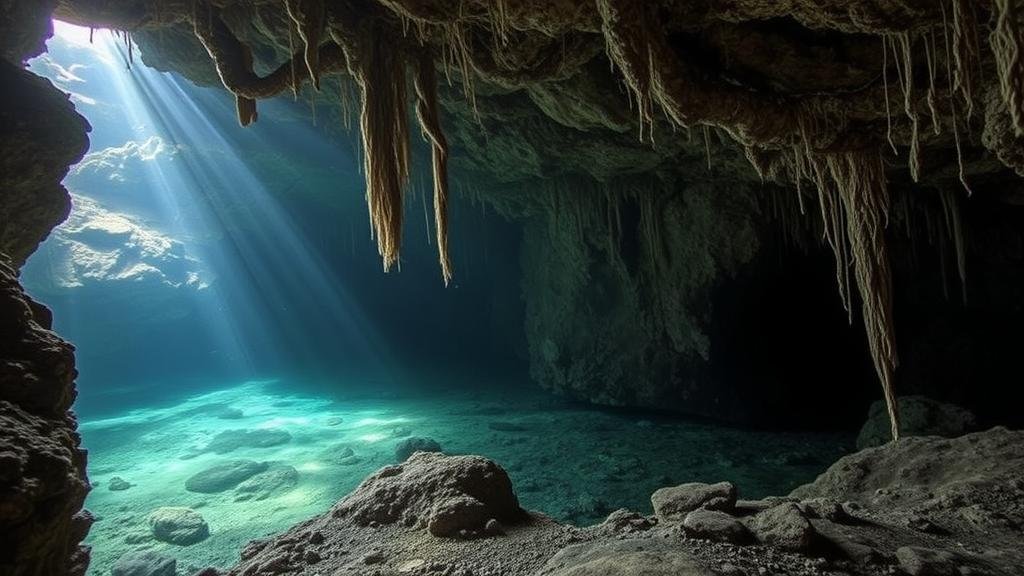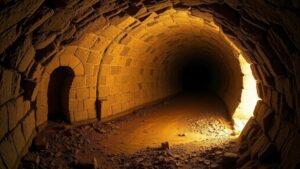Exploring underwater cave systems believed to hold the keys to Mayan secrets.
Exploring Underwater Cave Systems: The Keys to Mayan Secrets
The ancient Maya civilization, known for its monumental architecture, sophisticated astronomy, and rich ceremonies, has long captivated historians and archaeologists. Among the most intriguing aspects of their culture are the underwater cave systems believed to hold deep secrets related to their rituals, beliefs, and daily life. This article delves into these submerged worlds, highlighting their significance, explorations undertaken, and what they reveal about the Mayan civilization.
The Significance of Underwater Caves in Mayan Culture
Underwater caves, known as cenotes, played a crucial role in Mayan culture. e natural sinkholes were often viewed as sacred, representing gateways to the underworld, known as Xibalba. They were utilized for various purposes, such as:
- Religious ceremonies, where offerings were made to deities.
- A source of water, crucial for survival in the arid Yucatán Peninsula.
- An entry point to the regional underworld, integral to their mythology.
One of the most notable cenotes is the Sacred Cenote at Chichen Itza, which measures approximately 60 meters in diameter and has yielded numerous artifacts, including human remains, pottery, and stone tools. Such findings underscore the cenotes dual role as both sources of life and places of reverence.
Notable Underwater Cave Systems
Several underwater cave systems in the Yucatán region are particularly renowned for their archaeological significance:
- Dos Ojos: Located near Tulum, this expansive cave system features over 61 kilometers of underwater passages and is celebrated for its clear waters and rich biodiversity.
- Sac Actun: This cave system, approximately 347 kilometers long, is one of the longest underwater cave systems in the world and is believed to be a critical site for Mayan rituals.
- Cenote Xibalba: Resembling the Mayan underworld, this cenote is rich with mythological significance and has been the focus of numerous studies.
Exploration Efforts and Discoveries
The exploration of these underwater caves has gained momentum over the past few decades, with divers using advanced technology and techniques to uncover their secrets. One of the most noteworthy expeditions occurred in 2018 when a team of underwater archaeologists discovered over 200,000 artifacts in the Sac Actun system, ranging from classical Mayan pottery to ritualistic objects.
This expedition not only revealed significant artifacts but also offered insight into the daily lives and beliefs of the Maya. For example, carbon dating of objects found in these caves can provide a timeline for when specific rituals were practiced, helping to establish a clearer understanding of their culture.
The Scientific and Cultural Value of Underwater Caves
The research conducted in these underwater caves has broader implications as well:
- Preservation of History: Many artifacts found in these cenotes are remarkably preserved due to the stable temperature and low oxygen levels underwater, allowing for historical insights into the Mayan daily life.
- Interdisciplinary Studies: The findings attract interest from various fields such as anthropology, archaeology, and environmental science, creating a holistic understanding of the ancient civilization.
- Conservation Efforts: The importance of these sites has prompted organizations to advocate for their protection against pollution and tourism impacts.
A Real-World Analogy: The Mayan Underworld as a Treasure Chest
Think of these underwater cave systems like a treasure chest submerged in a vast ocean. Inside, there are not just jewels and gold, but stories, lifetimes, and cultures encapsulated in artifacts and remains. Just as pirates sought out treasure, so do archaeologists dive into these cenotes, hoping to unearth the secrets of a civilization that continues to fascinate the modern world.
Actionable Takeaways
As interest in the ancient Maya increases, there are several steps both individuals and communities can take to engage with this subject:
- Support local museums and exhibitions that feature Mayan artifacts and history.
- Participate in educational tours that highlight the importance of cenotes and their archaeological significance.
- Engage in conservation efforts aimed at protecting these fragile environments from pollution and over-exploitation.
To wrap up, underwater cave systems are not merely geological formations; they are rooted in the history and mythology of the Maya civilization. The ongoing exploration of these underwater worlds continues to shed light on their complex relationships with the spiritual and physical realms, revealing a culture that, despite the passage of time, remains deeply relevant today.



